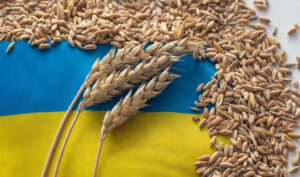
A decrease in supply on the residential real estate market in Kyiv and stable demand from buyers are maintaining the upward trend in prices for new buildings. By the end of the year, the cost per square meter will increase by 10-15%, the DIM group of companies told the Interfax-Ukraine agency.
“According to analysts at the DIM group of companies and industry observations, if the pace of the second half of the year does not fall below that of the first, the city will receive approximately 12-14 thousand new apartments by the end of the year, which is 15-20% less than last year. At the same time, limited supply amid stable demand will contribute to a further 10-15% increase in prices in the primary market by the end of the year,” the group said in a statement.
According to DIM, in the first half of 2025, the average price of new buildings increased by approximately 14% compared to the same period last year. Thus, , the average cost per square meter in new buildings is currently about $1,000/sq. m in the “economy” segment, $1,300/sq. m in the “comfort” segment, $2,200/sq. m in the ‘business’ segment, and $4,400/sq. m in the “premium” segment.
At the same time, the rate of increase in housing prices on the secondary market in the capital is slower: in the first half of 2025, prices rose by 8-10%, and the average cost per square meter on the secondary market is $2,000/sq. m.
According to Arseniy Nasikovsky, junior partner at DIM, the ability to move into ready-built housing is the main factor in choosing housing on the secondary market. However, a further reduction in the supply of new buildings in the event of a deterioration in the security situation will also shift the focus to secondary market properties.
“The choice between primary and secondary housing in 2025 will depend on the balance between readiness, risk, and the buyer’s financial capabilities. If the buyer values the ‘move in and live’ formula, they will choose secondary housing. New buildings offer a fundamentally different level of comfort, primarily a new level of security, which is very important in wartime, modern layouts, energy efficiency, and the availability of shelters and parking lots,” the expert explained.
According to DIM’s forecast, the restoration of new construction volumes to pre-war levels can be expected no earlier than the end of 2027. Today, there are only 140-145 residential complexes for sale on the capital’s market, which is a quarter less than before the war.
The portfolio of the development company DIM consists of real estate in Kyiv and the region with a total area of over 900,000 square meters. More than 3,600 apartments have been commissioned, and more than 356,000 square meters of residential and commercial space has been built. Six projects with a total area of more than 346,000 square meters are currently under construction.
Analysis, DIM, KYIV, REAL ESTATE, WHEAT

As of September 22, Ukraine had exported nearly 1.7 million tons of wheat, and there is enough product on the market to cover contracts, which is holding back price growth, but the situation may change in October.
This forecast was announced by the analytical cooperative “Pusk,” created within the framework of the All-Ukrainian Agrarian Council (VAR).
“The indicative price for third-class wheat remains at $212–214 CPT-port. This is due to sufficient product reserves among traders and high supply on the global market, especially from Russia,” its analysts noted.
According to their information, coverage of wheat contracts for November-December will significantly decrease for many market players.
“Contracts for October are already being concluded at a price of $218-220 CPT-port with a potential increase to $223. The main reason is a reduction in stocks and growing uncertainty about the future harvest,” the experts explained.
Climate risks in countries that are major wheat producers will be the leading factor supporting prices.
“In Ukraine, the central and southern regions are suffering from drought, and no significant rainfall is forecast in the near future. Russia is also experiencing a critical moisture deficit, and the pace of sowing is the slowest in the last five years. A similar situation is observed in France, Romania, and Bulgaria, where moisture shortages are threatening winter wheat yields. Given this, there is a threat of a reduction in winter crop areas. Importers, anticipating potential problems with the 2026 harvest, may purchase grain more actively. Therefore, wheat prices may rise significantly in January-March,” Pusk states.

Astarta, Ukraine’s largest sugar producer, has completed its early grain and oilseed harvest, yielding 237,000 tons of wheat (-9% y/y) and 31,000 tons of rapeseed (-23% y/y), according to the press service of the agricultural holding.
Astarta noted that wheat yields were 5.2 tons/ha (-3% y/y) and rapeseed yields were 2.7 tons/ha (-20% y/y).
“The current season was characterized by a number of climatic challenges: a lack of precipitation over most of the territory, spring frosts, local hailstorms, and prolonged rains in the western regions, which affected the pace of crop ripening and harvesting. At the same time, thanks to effective planning, the prompt deployment of equipment, and the coordinated work of Astarta’s agronomic and production teams, the company ensured timely and high-quality harvesting,” the agricultural holding said.
The highest results were achieved by agricultural companies in western Ukraine: Zhitnytsia Podillya with a wheat yield of 7.4 t/ha and Volochysk-Agro with a rapeseed yield of 3.1 t/ha. Astarta has now begun harvesting late crops.
At the same time, Astarta’s farmers are sowing winter crops for the 2026 harvest. The planned areas are 44,000 ha for winter wheat (-3% y/y) and 16,000 ha for winter rapeseed (+45% y/y).
According to the results of the first half of 2025, revenue in the segment amounted to EUR61 million (-38% y/y) amid a decline in sales volumes compared to last year’s harvest. Exports accounted for 83% of the segment’s revenue (compared to 93% in the first half of 2024),” the agricultural holding summarized.
Astarta is a vertically integrated agro-industrial holding operating in eight regions of Ukraine and the largest sugar producer in Ukraine. It comprises six sugar factories, agricultural enterprises with a land bank of 220,000 hectares, dairy farms with 22,000 head of cattle, an oil extraction plant in Hlobyn (Poltava region), seven elevators, and a biogas complex.
In 2024, Astarta increased its net profit by 34.5% to EUR83.25 million, while its consolidated revenue decreased by 1.1% to EUR612.15 million.
In the first quarter of this year, the agricultural holding’s revenue fell by 24.9% to EUR124.58 million, while net profit fell by 28.8% to EUR6.42 million.
On June 12 this year, the shareholders’ meeting approved the payment of dividends for 2024 in the amount of EUR0.5 per share for a total of EUR12.5 million, which corresponds to the figures for the previous two years.

The US Department of Agriculture (USDA) has lowered its July forecast for Ukraine’s wheat production in the 2025-2026 marketing year (MG, July-June) by 1 million tons compared to the June forecast, to 22 million tons (by 4.35%), while leaving its forecast for corn unchanged and raising its forecast for soybeans by 1 million tons, to 7.6 million tons (by 15.15%).
According to the US agency’s forecast, published on its website, wheat exports from Ukraine have been reduced by 1 million tons to 15.5 million tons, while final stocks have been increased by 0.1 million tons to 1.59 million tons.

The TAS Agro agricultural holding has begun harvesting early grains from winter wheat in the Southern cluster and has already threshed about 600 hectares, the agricultural holding’s press service reported on Facebook.
TAS Agro specified that the harvest started at the optimal time and that grain yields are fully in line with standards.
“This year, we will make maximum use of our own equipment, which has been updated in recent years. However, we will not refuse to lease combines for economic reasons. In total, we plan to use 75 units of grain harvesting equipment during the harvest. This is more than last year, as the area under early grain crops has increased, particularly in the Southern cluster. Almost all of our own grain transshipment equipment will also be used,” said Oleg Zapletnyuk, CEO of TAS Agro.
According to him, in parallel with the harvesting campaign, the agricultural holding is working on organizing logistics and sales of the harvested crop. Storage facilities and some elevators have already been certified to the international standard ISO 22000:2018.
For the 2025 harvest, TAS Agro has sown 22,000 hectares of winter wheat, 14,000 hectares of winter rapeseed, 16,000 hectares of sunflower, 15,000 hectares of soybeans, and 7,000 hectares of corn.
Soon, in the Southern cluster, parallel to the wheat harvest, the rapeseed harvest will begin. Over the next few weeks, the harvest will spread to other clusters, the agricultural holding concluded.
TAS Agro was established in 2014. Its land bank includes 88,000 hectares in the Chernihiv, Sumy, Kyiv, Vinnytsia, Kirovohrad, and Mykolaiv regions. It specializes in crop production, and the agricultural holding’s elevator capacity is about 250,000 tons. The livestock business is represented by a herd of 5,500 head of cattle, of which 2,500 are dairy cattle.
The agricultural holding is part of the TAS group, founded in 1998.
Its business interests include the financial sector (banking and insurance segments) and pharmacies, as well as industry, real estate, and venture projects.
The founder of TAS and beneficiary of the TAS Agro agricultural holding is Serhiy Tihipko.